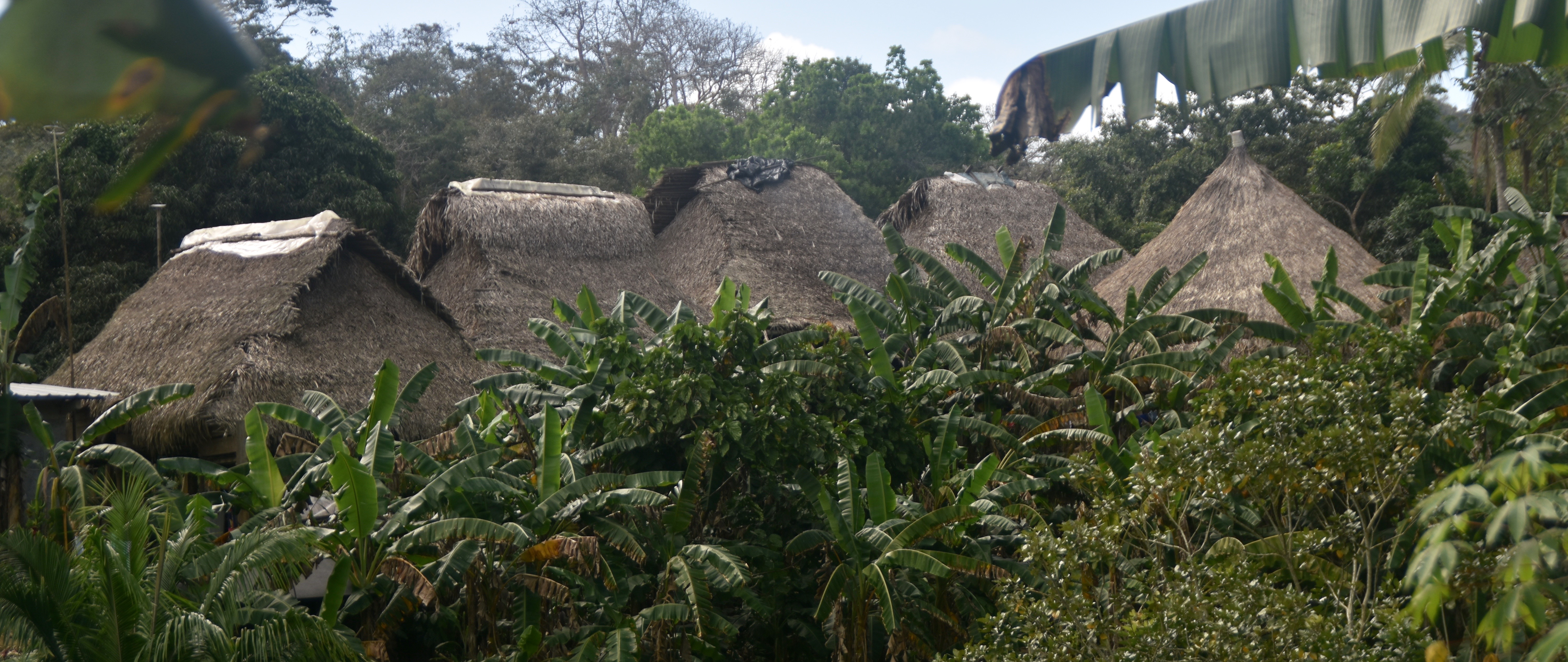Embera Indigenous Village, Panama
My visit to Panama continues with a completely different experience from the half crossing of the Panama Canal which was an example of hyper modernity with the largest ships in the world moving massive amounts of products from one continent to another. In this post I go in the opposite direction. The interaction between the European conquerors of the New World and their colonial successors with the indigenous peoples of North, South and Central America, has for the most part been an unmitigated disaster for the aboriginals. The recognition of past wrongs and concession of land title to First Nations has done little to ease the tension between the two groups. Frustrations on both sides continue to this day as resource developers seek the ever illusive ‘social license’ from First Nations, required before all but the most modest projects can proceed. At least that’s the picture in my home country of Canada. It was refreshing to find out that in one area of Panama an indigenous community has worked out a solution that lets them live the way they want to and at the same time make a living from those questing to learn about their culture and way of life. Won’t you join me on a visit to an Embera indigenous village with Canadian tour company Adventures Abroad to find out why they reject most of the trappings of ‘modern civilization’?
History of the Embera People
Trying to find information about the origins of the Embera people and how one small group of them came to live in what most would term ‘primitive conditions’ just an hour from Panama City, was not easy. Much of what I found was contradictory or maddeningly incomplete. Here’s what I think I can write with some certainty. The Embera number just over 80,000 people of which about 50,000 live in Colombia and the rest in Darien province of Panama. They have their own language group with many sub-languages. From here it gets a bit murky because apparently the Embera only moved into their traditional Panamanian homeland well after the Spanish arrived and did so largely at their behest to help control the resident Cuna tribes who were giving the Spaniards a hard time. They were experts with blowguns and poison tipped darts that did the job on the Cunas and drove them from their territory which the Embera then took over. The Spanish then realized that Darien was really not worth fighting over and essentially just left the Embera to their own means.
So for a couple of hundred years the Embera kept to themselves with little contact with outsiders living largely as hunters and gatherers. Only in the mid 20th century did they start to come together into organized villages and starting a movement to have the rights to their territory recognized by the Panamanian government which is an ongoing process. But that still begged the question of how a small tribe (less than a hundred) of Embera ended up living in a village on the banks of the Chagres River only a mile or so away from the very modern Gamboa Rainforest Reserve. The answer was not easy to come by and I’m still not sure I’ve got it correct. I do know that they left their native Darien less than fifty years ago and that it was probably due to the continued threat of violence from FARC Marxist rebels who in reality were little more than drug dealers, kidnappers and murderers. From the moment you meet the Embera people you know that they are a gentle folk who are content to make a living through tourism, without necessarily compromising their way of life.
Visiting
A visit to the Embera tribe starts with a refreshment stop at the Gamboa Rainforest Reserve which has a terrific view over the Panamanian rainforest. A short distance from the hotel there’s a small landing area where two small boats await to take us across the Chagres River. This is where I was somewhat taken aback to see that the young men and boys who were to steer us across to the village, were wearing only loin clothes. This was not prudery on my part, but rather the strange sense of walking into something right out of National Geographic. I’d been seeing pictures of rainforest dwellers for over fifty years in that illustrious publication and it was kind of a ‘pinch me’ moment to see them in person.
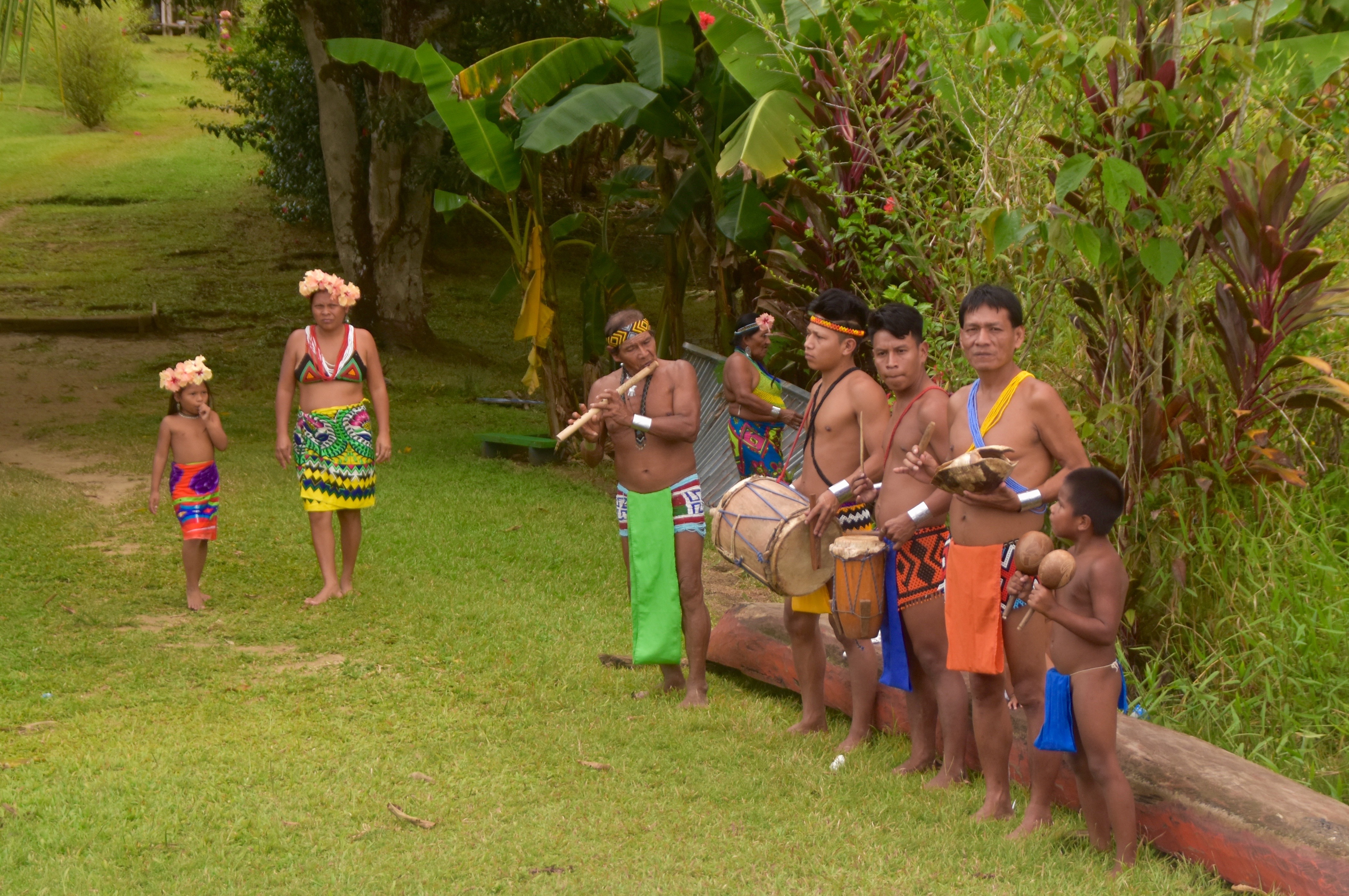
This is the scene we were greeted with upon reaching the other side of the river. During our time at the village it took me a while to get used to the fact that the Embera were not ‘dressing up’ as indigenous people, but rather this is how they go about their daily lives. Yes they are well paid by companies like Adventures Abroad, but we are getting a glimpse of how they live and not a modern version of Buffalo Bill’s Wild West Show. And at the risk of being simplistic, I did find the setting Edenic and while the Embera are certainly not savages, they are indeed noble in the sense that Jean-Jacques Rousseau and others propounded in the 18th century.
After our musical welcome we were led to this large open complex which would be the closest thing to a community centre.

There we sat on benches and were introduced to the lady on the left who is the first female leader of this community, chosen in a free vote by all of the adult villagers. The spokesman translated the language she spoke to English, although I was told that almost all the Embera understand Spanish.
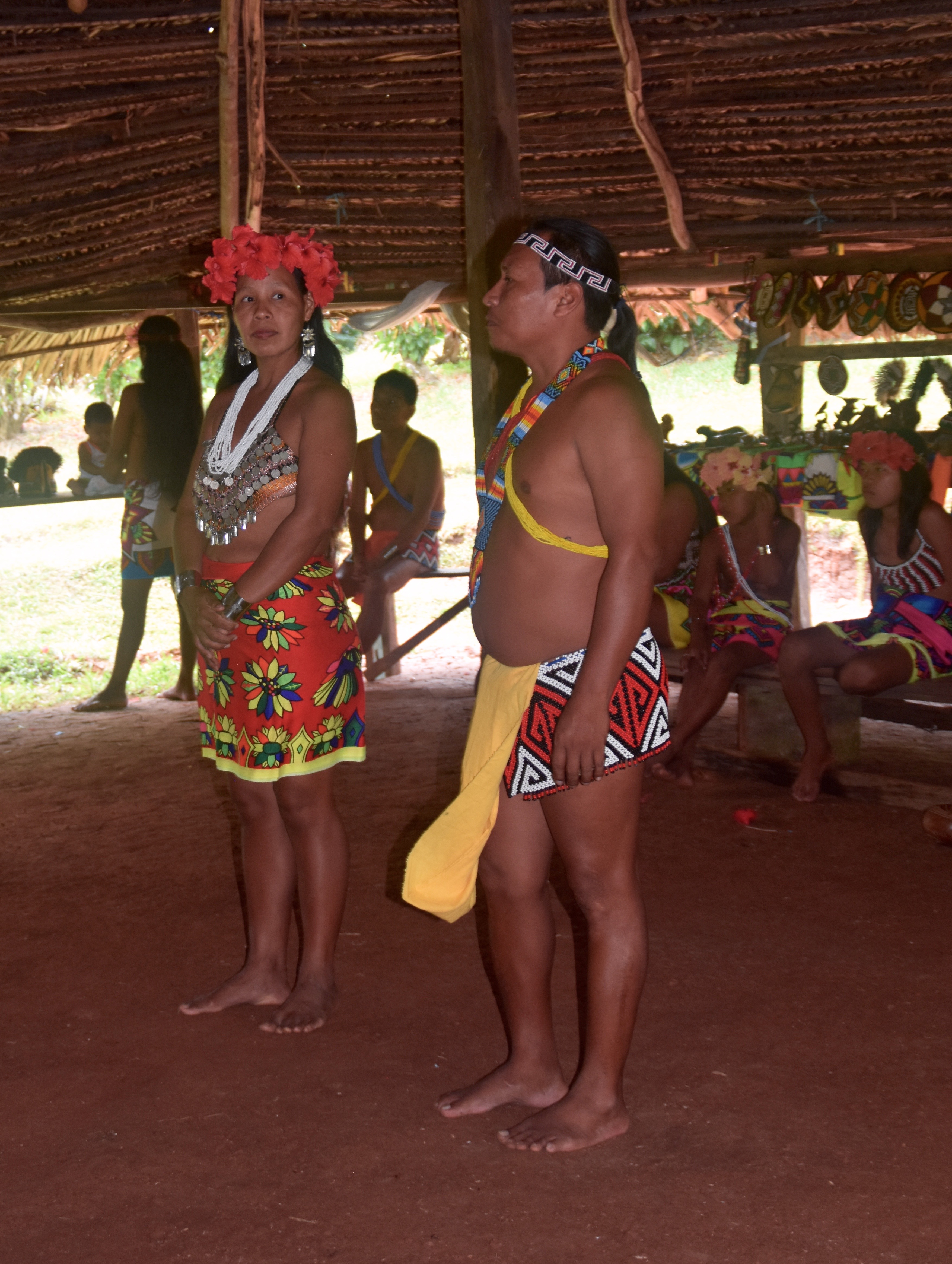
Next we were served a meal of wonderfully fresh fruit followed by fried tilapia and plantain wrapped in banana leaves.
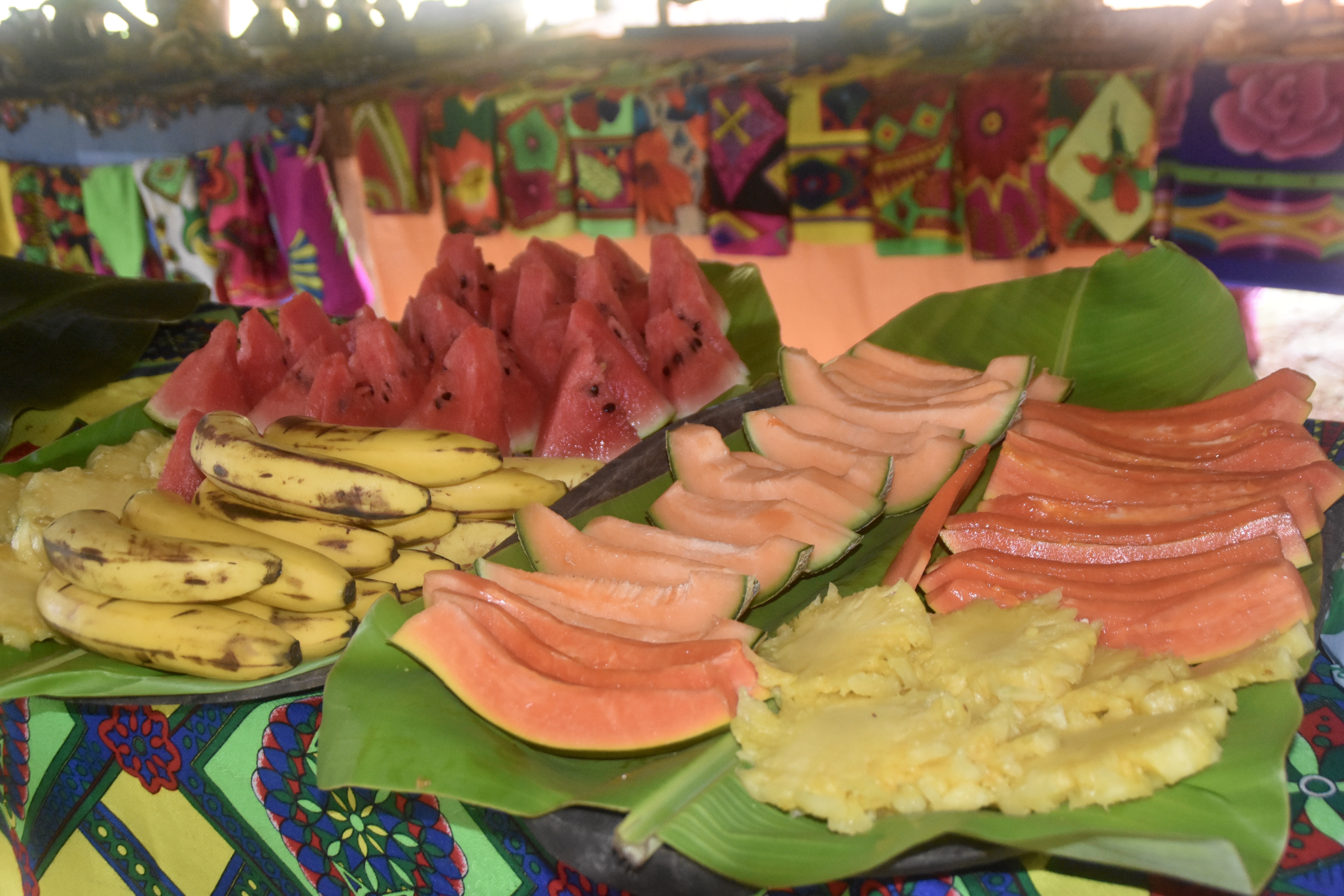
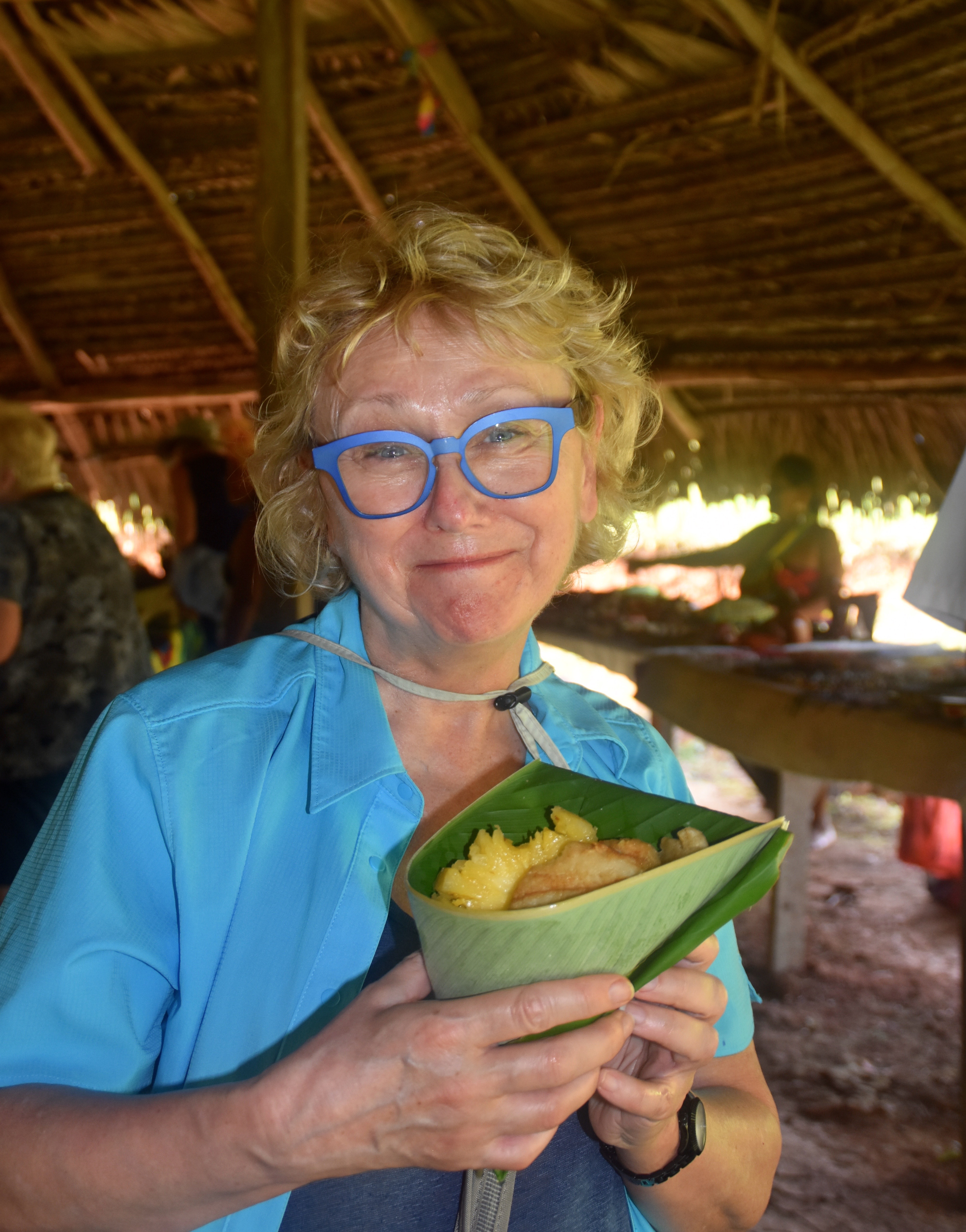
After lunch, it was time for music and dancing, first by the Embera men and boys playing their musical instruments.
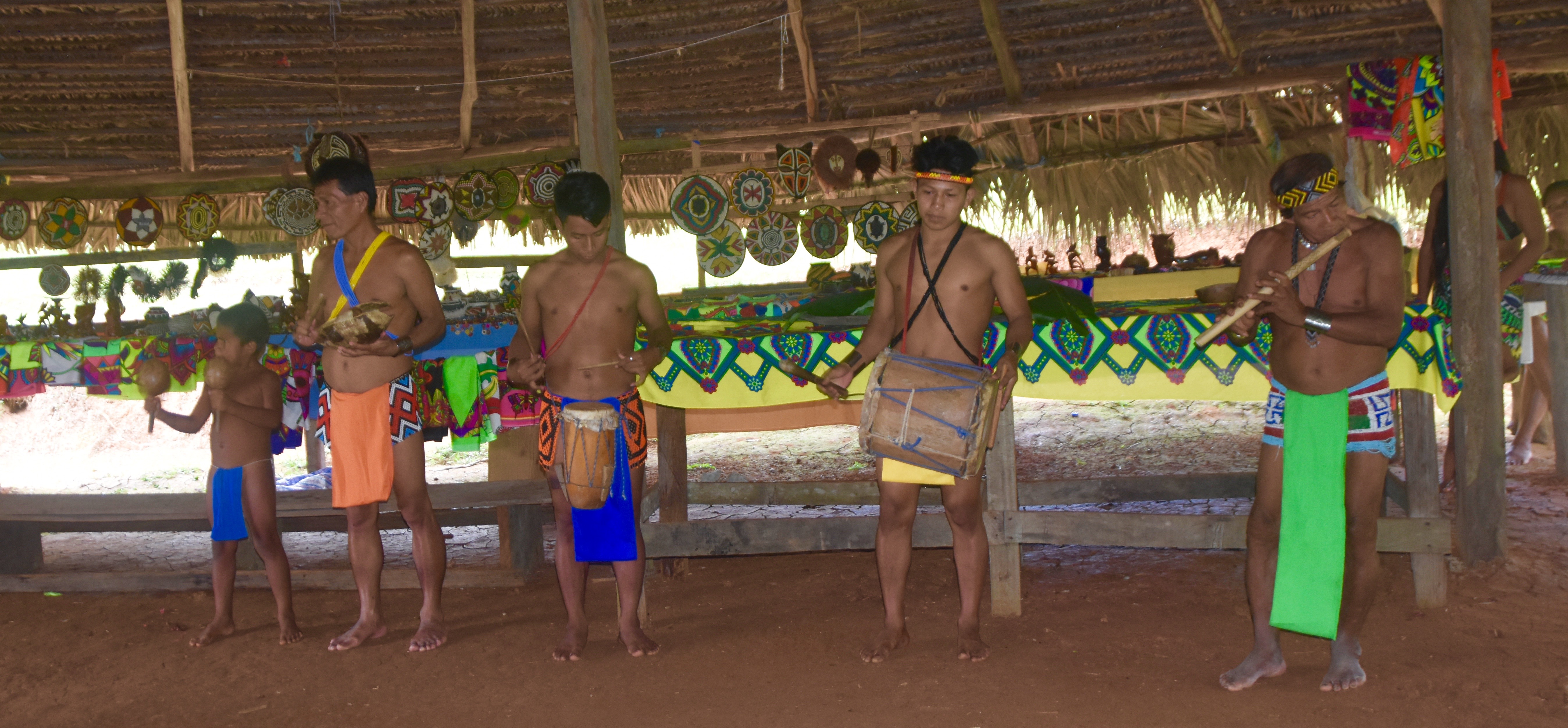
Then the women began dancing in a slow hypnotic circle.
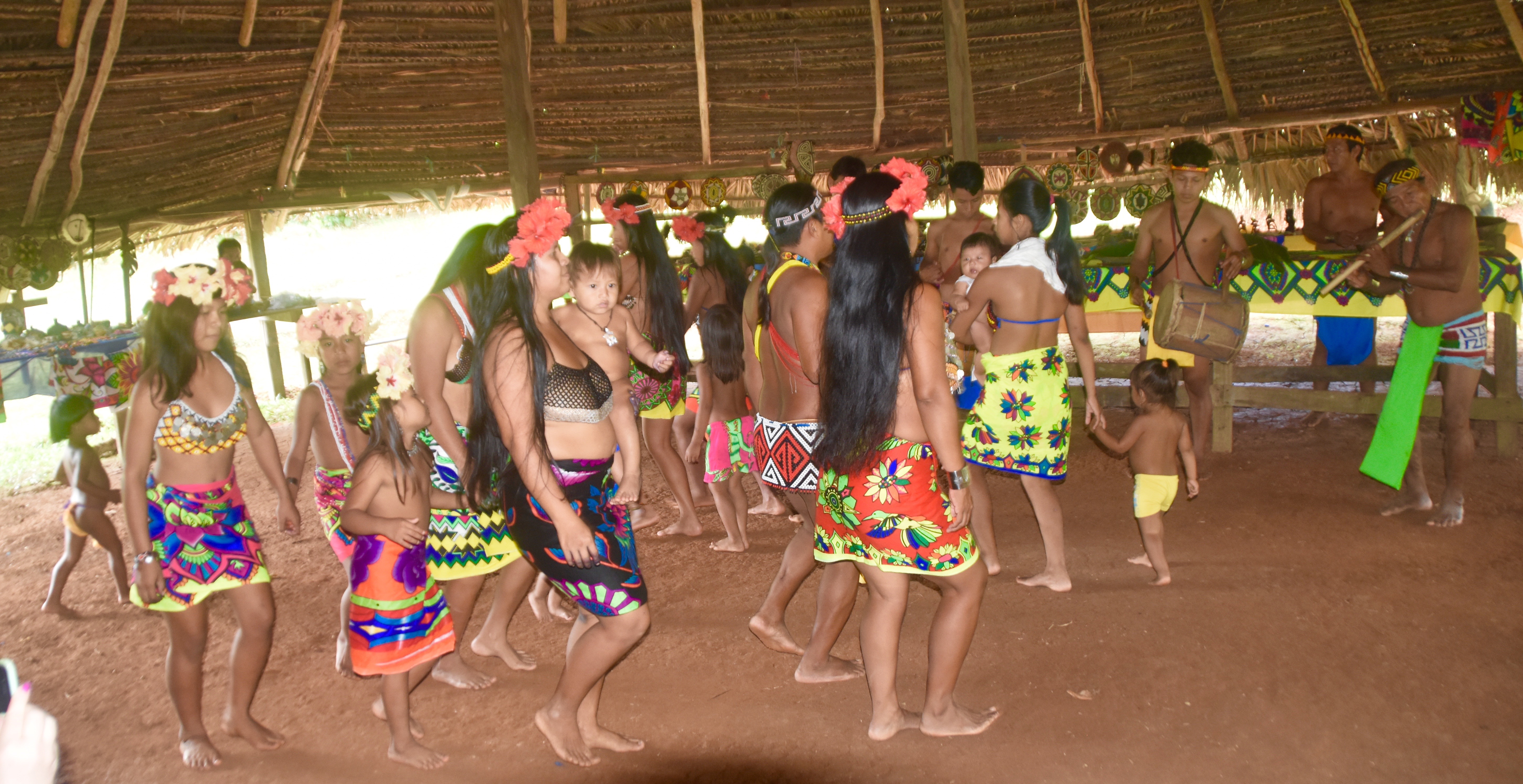
And finally all concerned getting into the act. It was completely surrealistic this meeting of two completely different cultures coming together in the universal language of music and dance.
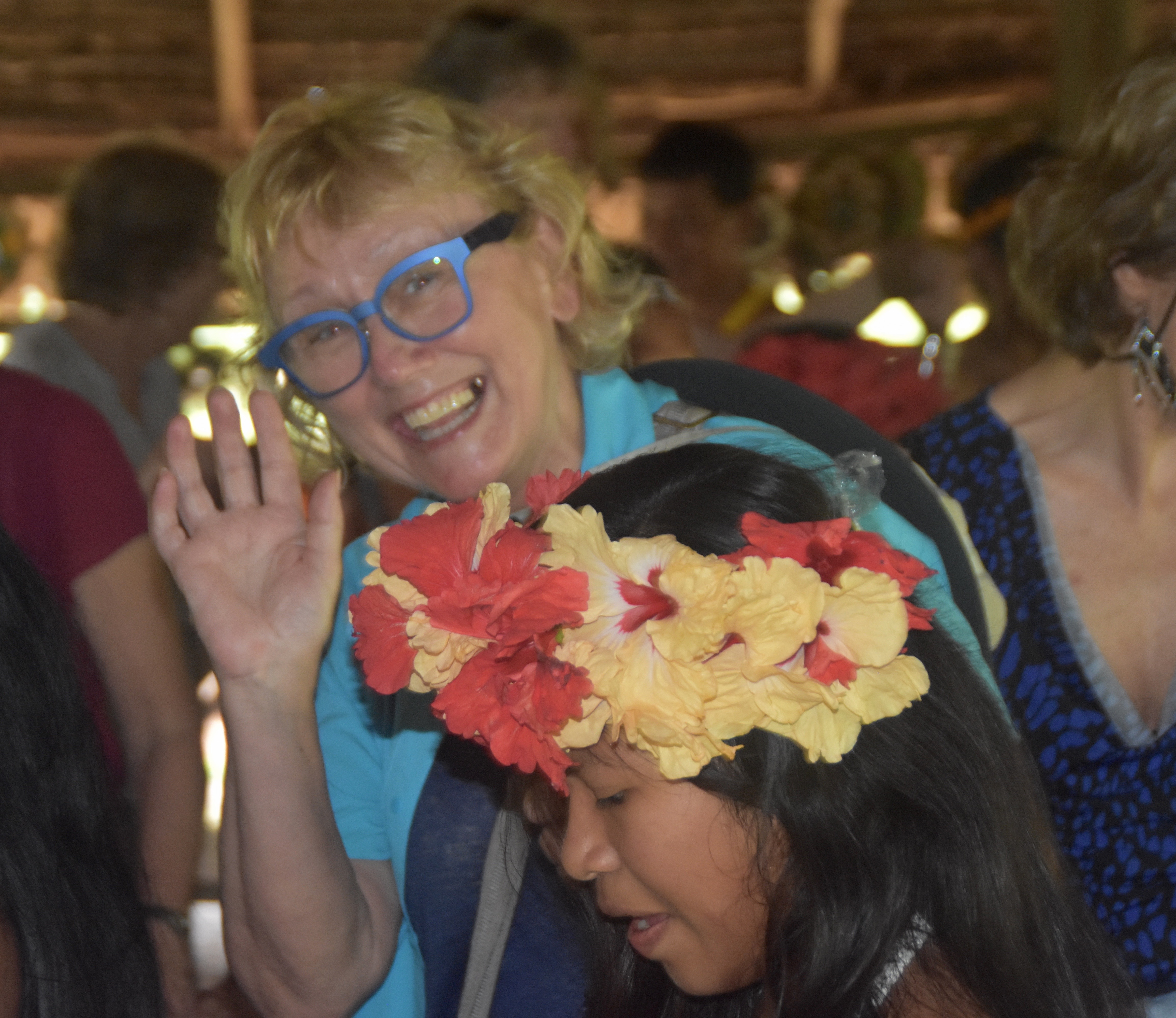
Following the dance party we were taken on a tour of the village and left free to explore on our own. These are a few of the pictures I took of everyday life as an Embera.
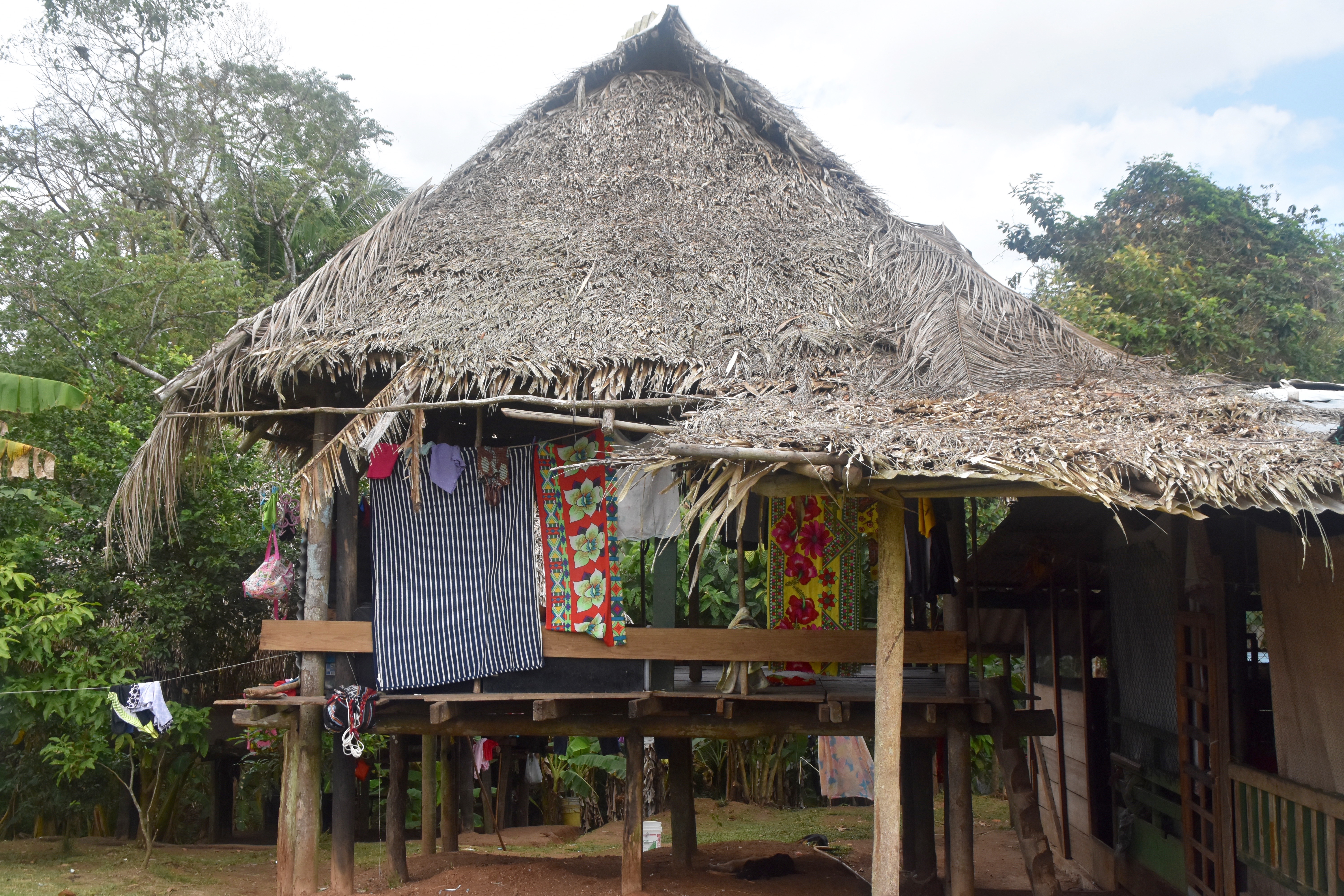
Looking at this photo you can see why some people think the Embera people originated in Polynesia.
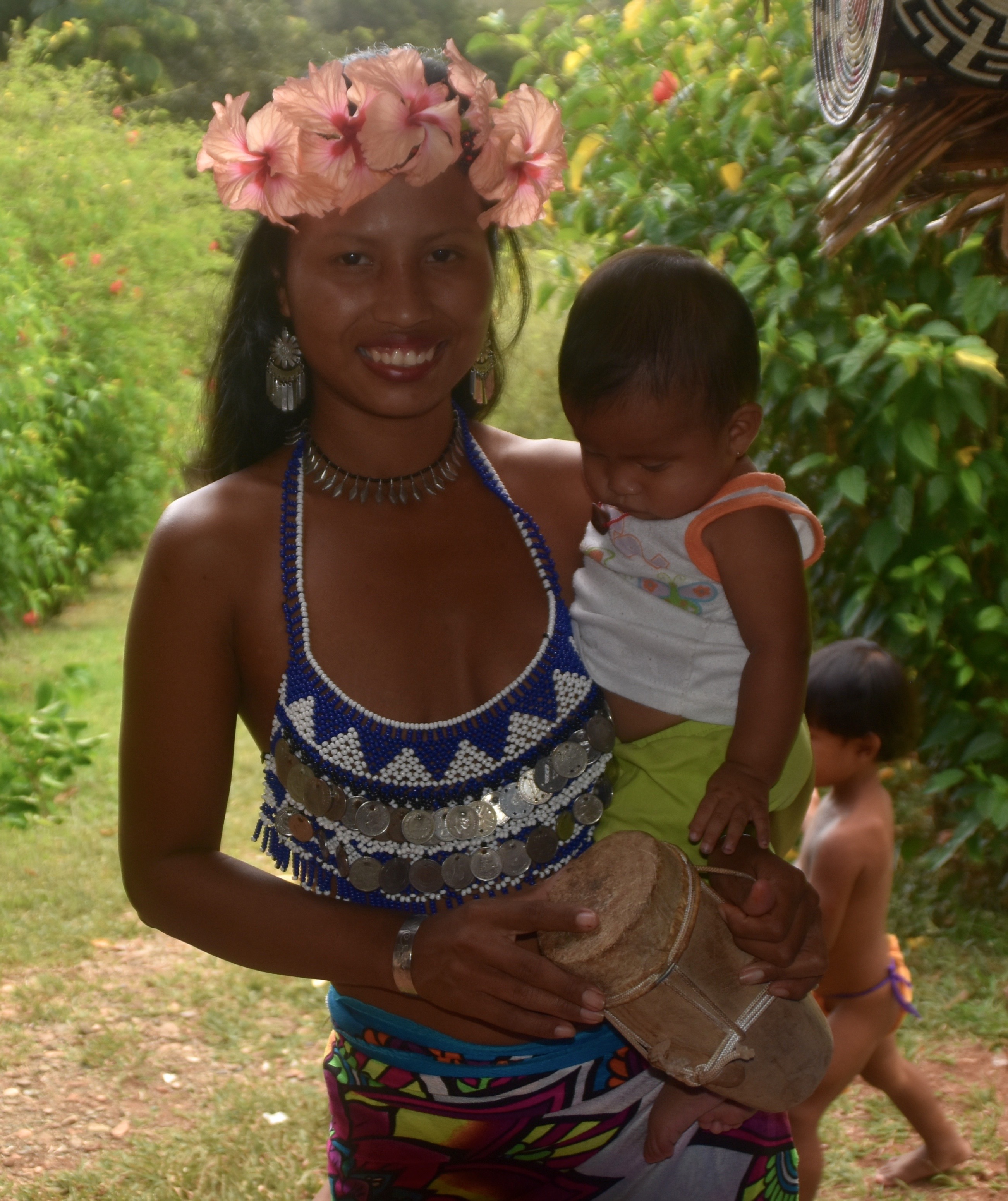
This is a profile of the oldest resident.
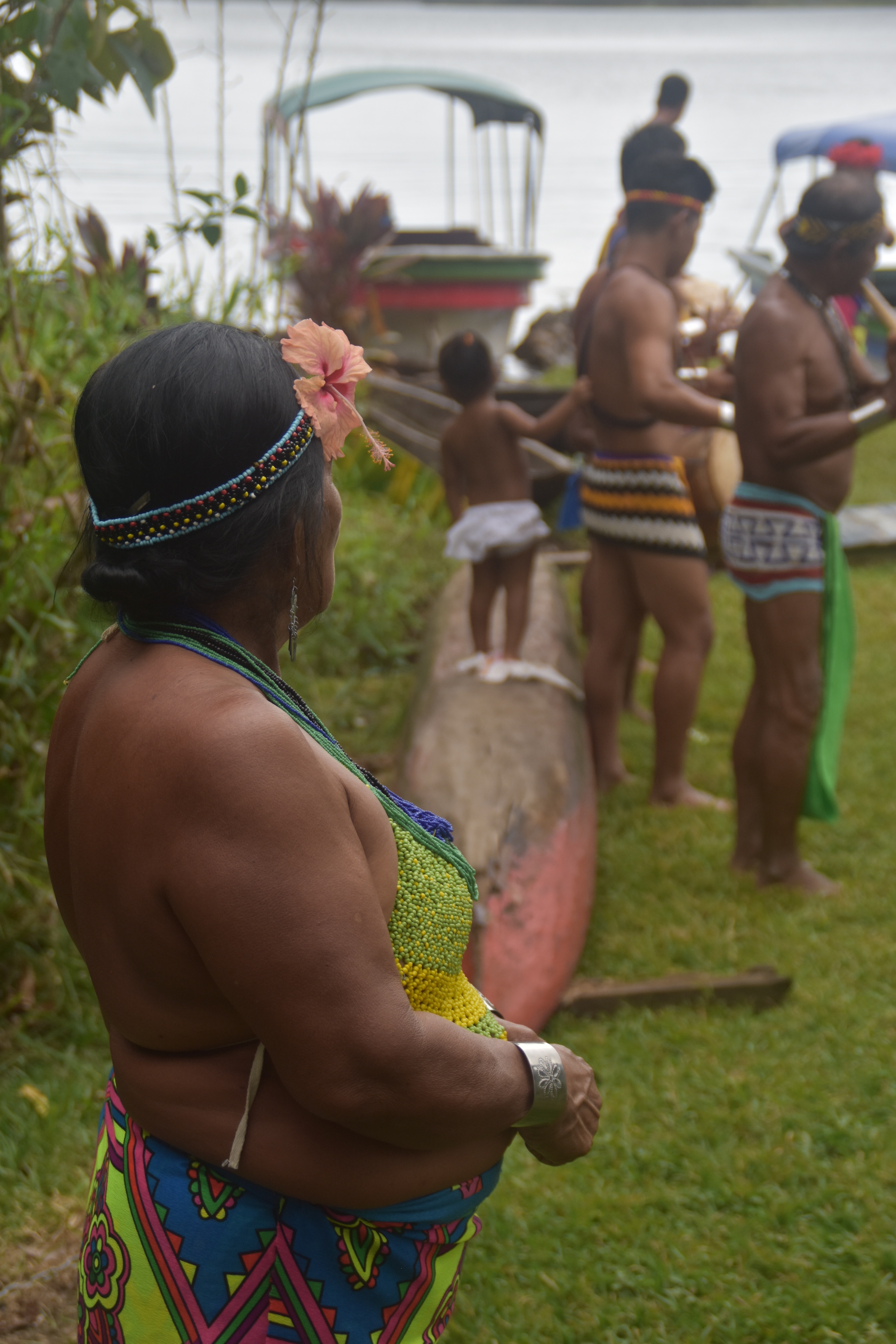
And here is the youngest, already learning to play the drum.
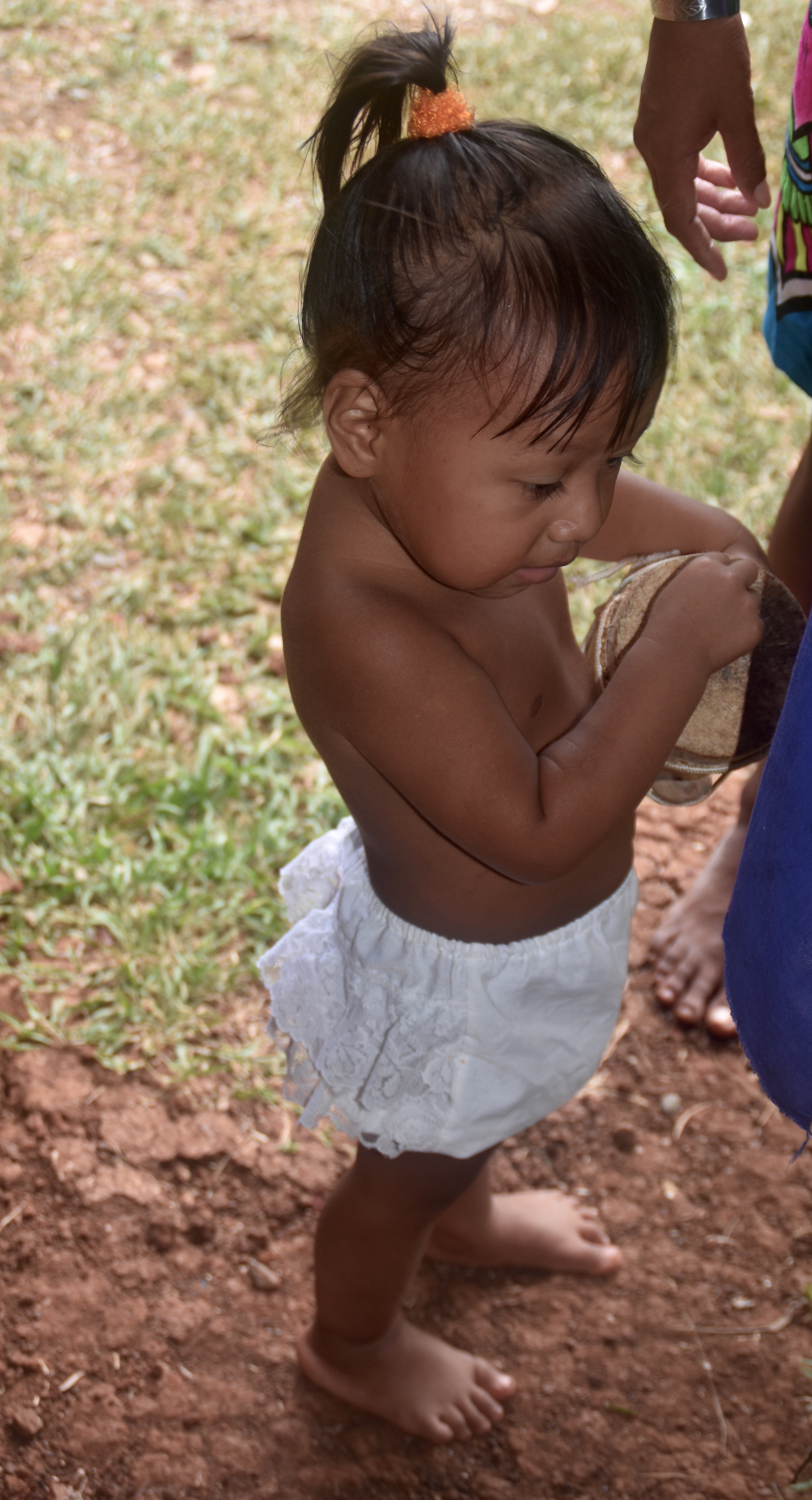
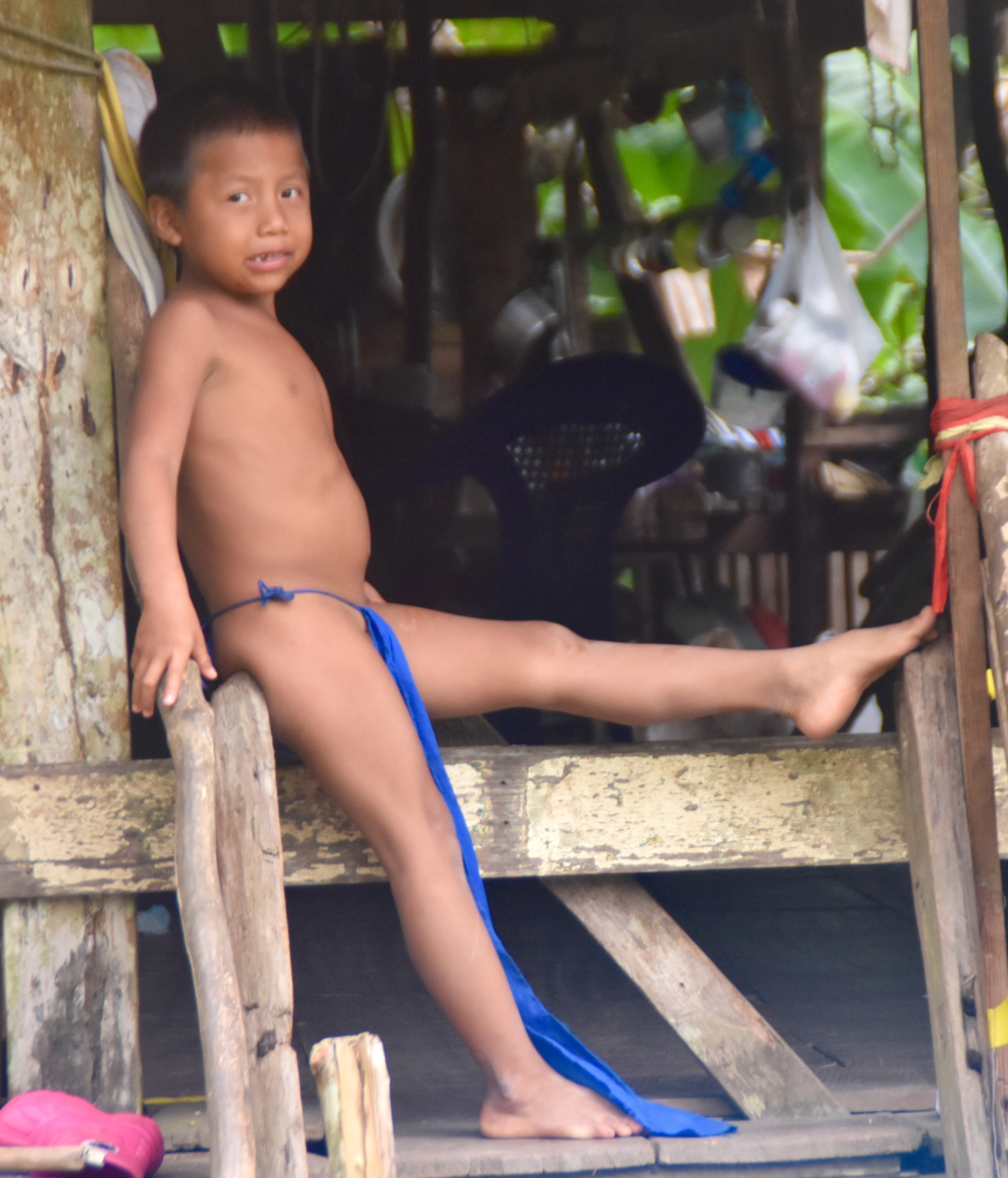
After touring the village we returned to the community lodge for a chance to purchase handicrafts made by the villagers. These were colourful, intricate and very fairly priced. I bought four of these baskets as gifts for those not fortunate enough to be here in person.
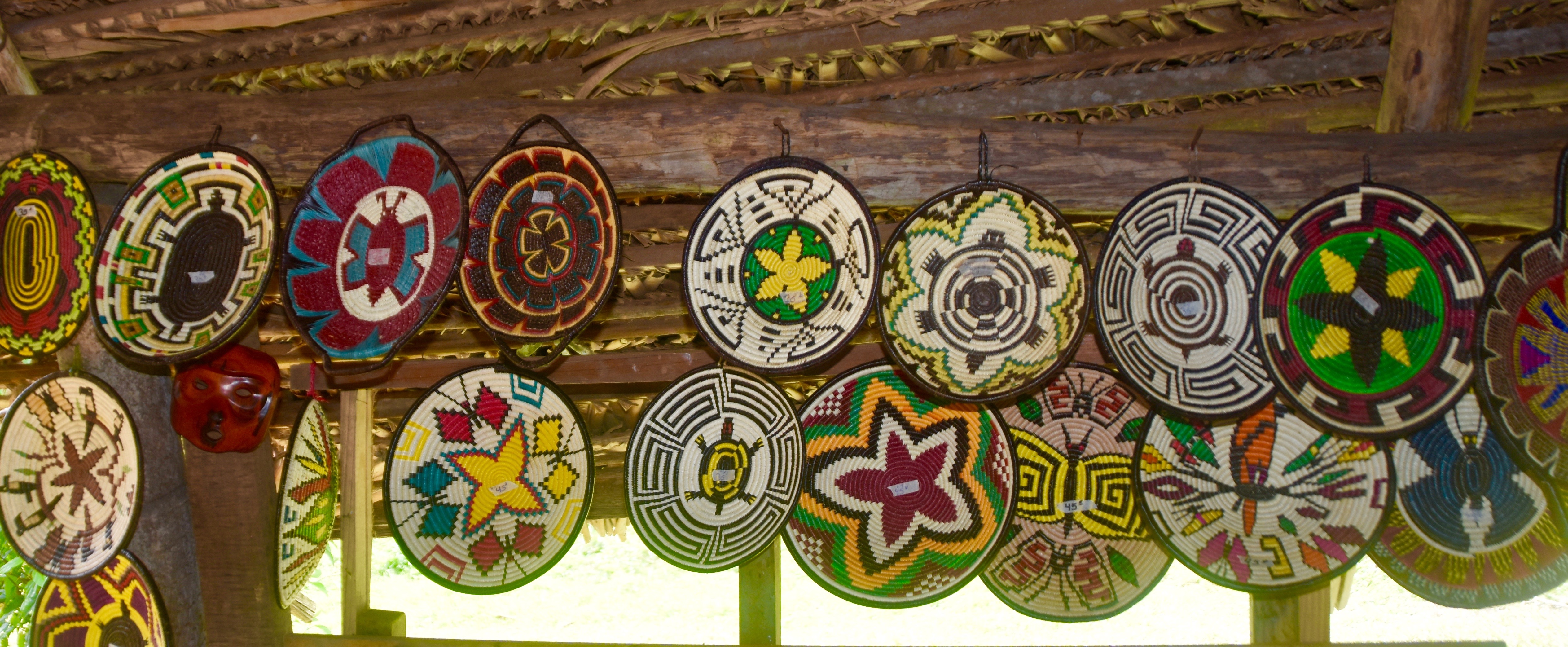
As we headed back to the boats I took one last look back at the straw rooftops and thought, somewhat wistfully, “Was I just exploiting these people? Were they exploiting us?” The answer for me was a definite “No” on both accounts. I honestly believe I am a better and more worldly person by having visited with the Embera and realizing that you don’t need a 62″ flat screen TV or a sports car to be happy.
